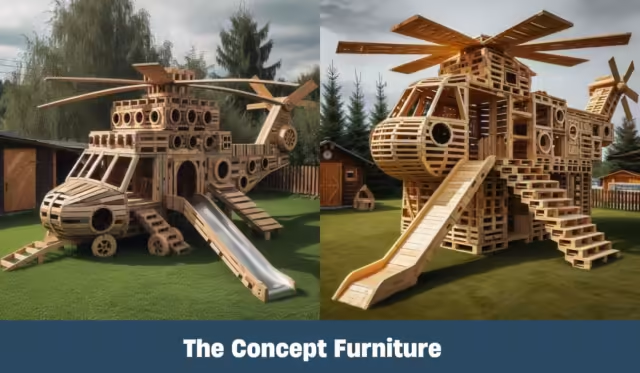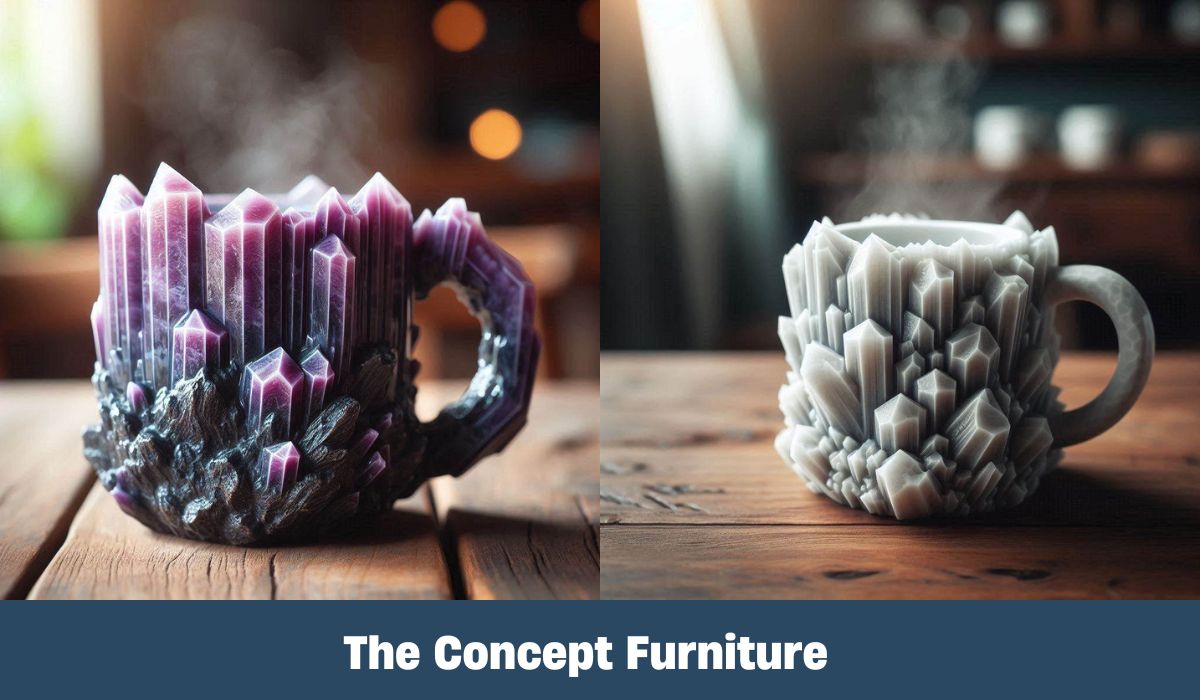The enchanting allure of a wood helicopter captivates enthusiasts and collectors alike. From their historical significance in aviation to their handcrafted beauty, wooden helicopters stand out as unique creations that blend art and engineering. This article delves into the fascinating world of wood helicopters, exploring their various forms, craftsmanship, benefits, and even how one can create their own.
Introduction to Wood Helicopters
In the broad expanse of aeronautical engineering, the evolution of flight has seen materials come and go. However, one material that holds a special place in aviation and model-making is wood. The wood helicopter isn’t just a representation of flight; it represents a rich narrative of human creativity and craftsmanship.
Wooden helicopters have been around since the early days of aviation, serving as models for education, toys for children, and artistic expressions for craftsmen. Their construction requires both skill and an understanding of aerodynamics, making them a perfect marriage of artistry and science.
Historical Significance of Wood in Aviation
Wood has played a pivotal role in aviation history, particularly during the early 20th century when it was the primary material used in aircraft construction. Pioneers like the Wright brothers utilized wood because of its light weight, availability, and ease of manipulation.
The introduction of new materials like metal and composite plastics eventually shifted the focus away from wood for functional aircraft. However, the legacy of wooden craftsmanship remains vibrant in model making and educational settings. Educational institutions often use wooden models, such as the wood helicopter, to teach students about fundamental principles of flight.
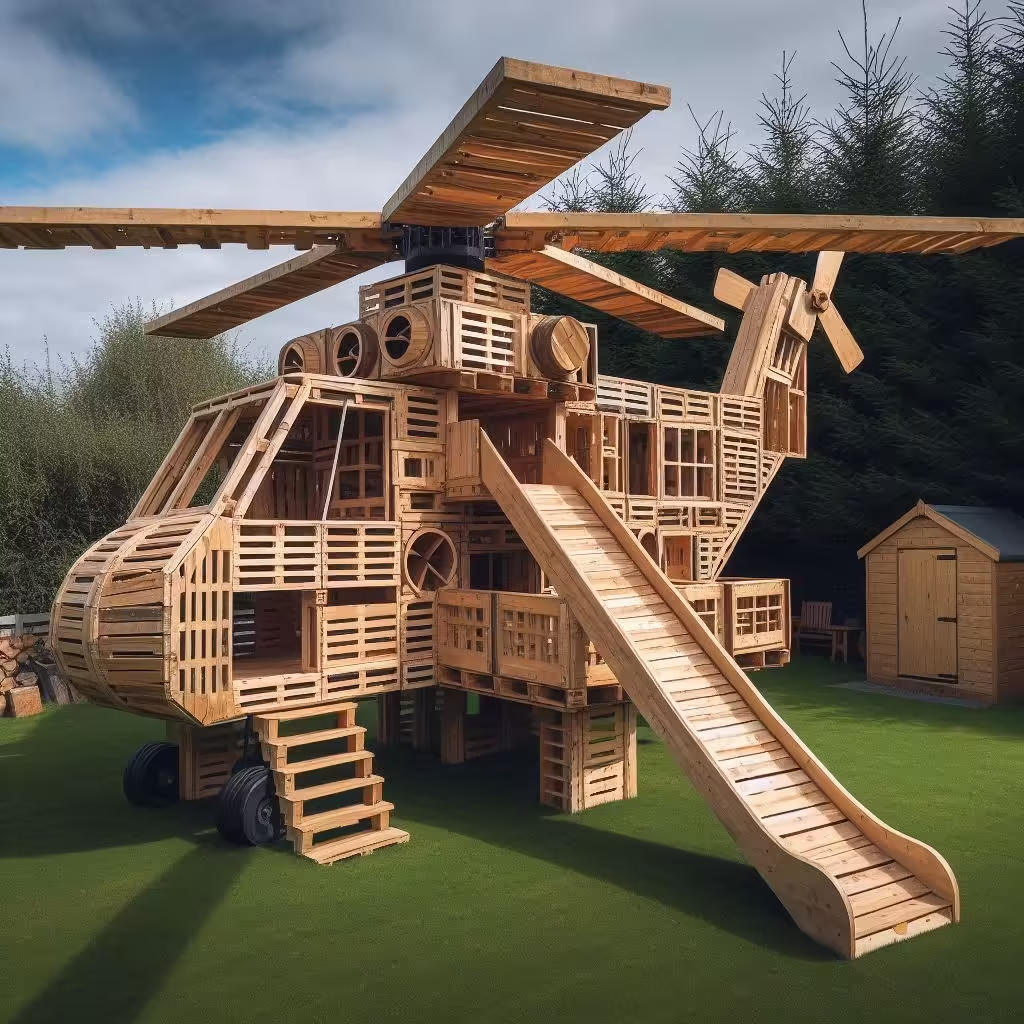
In recent years, there has been a resurgence in interest towards sustainable practices, bringing wooden craft back into popular favor. Enthusiasts appreciate not only the aesthetic quality but also the historical resonance these pieces carry, connecting us to the origins of flight.
The Craftsmanship Behind Wood Helicopters
Creating a wood helicopter requires meticulous attention to detail and a deep understanding of both the properties of wood and the mechanics of flight. Each piece is hand-crafted, reflecting the artisan’s skill and dedication.
Artisans select specific types of wood based on characteristics such as weight, grain, and workability. Balsa wood, for example, is highly favored due to its lightweight and strong properties, ideal for model-making.
Crafting a wooden helicopter often involves multiple techniques, including carving, sanding, and finishing. As artisans shape the body and rotor blades, they must consider the balance and aerodynamic aspects essential for the piece’s functionality, whether it be purely decorative or functional. This level of craftsmanship transforms mere blocks of wood into stunning representations of aviation marvels.
Types of Wood Helicopters
When it comes to wood helicopters, they can be categorized into several distinct types, each appealing to different audiences. From intricate scale models to functional toys and artistic sculptures, the versatility of wood allows for diverse creations.
Understanding the different types can help enthusiasts find the perfect piece for their collection or even inspire them to create their own version.
Scale Models for Hobbyists
Scale models of helicopters offer hobbyists a chance to engage with aviation history on a personal level. These models reflect real-life aircraft, scaled down to allow for display and sometimes functionality.
Crafting or purchasing a wood helicopter as a scale model brings a sense of satisfaction. Hobbyists often enjoy meticulously recreating every detail, from the cockpit design to the rotor mechanism. Many enthusiasts take pride in showcasing their collections at displays and exhibitions, sparking conversations around the intricacies of aviation history.
Additionally, scale models serve educational purposes, helping individuals understand the mechanics of flight through tactile experience. Looking at a beautifully crafted wooden scale model can ignite curiosity about aerodynamics and engineering principles.
Functional Toy Helicopters
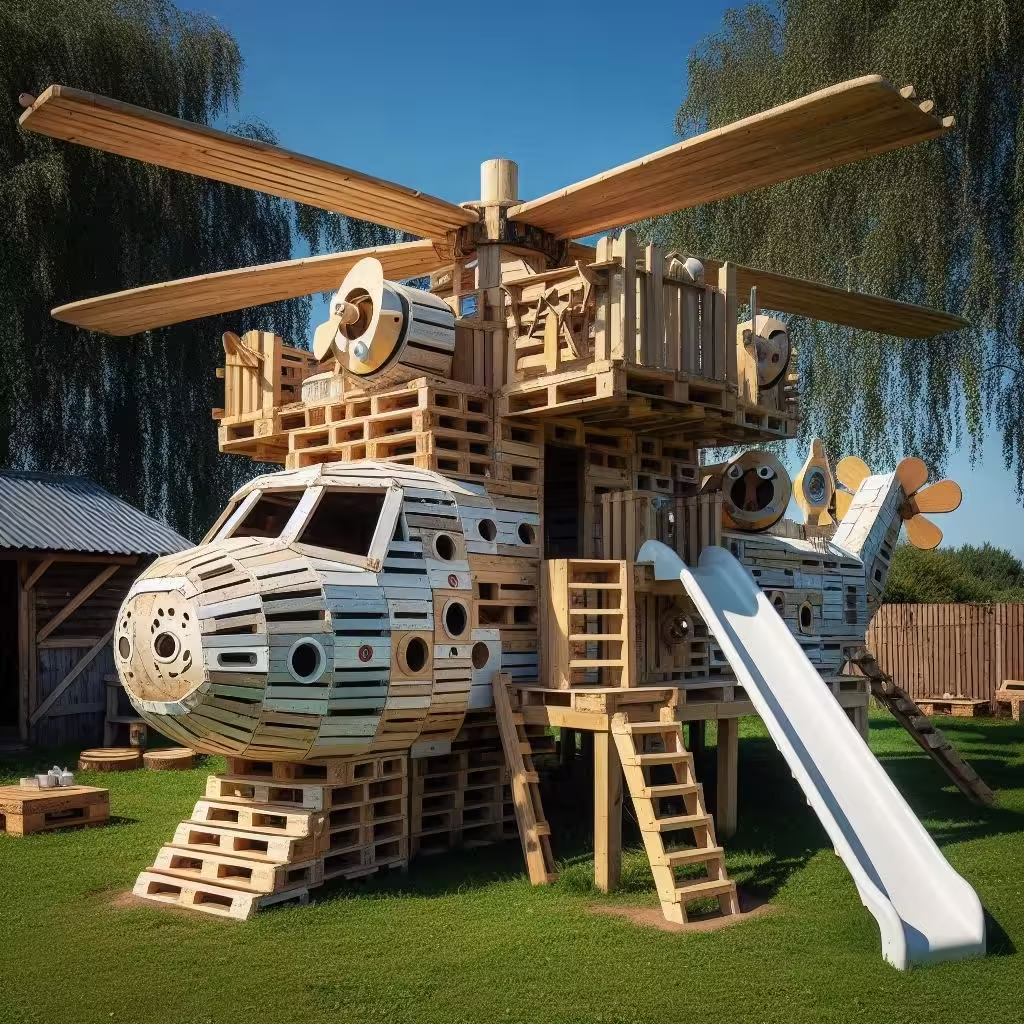
For children, functional toy helicopters made from wood provide an engaging way to stimulate imaginative play. Unlike plastic counterparts, wooden toys are often more durable and eco-friendly, leading to increased demand among parents who seek quality products for their children.
A wooden helicopter toy encourages imaginative scenarios where children can create their own stories. The tactile nature of wood adds a sensory experience that is often missing in synthetic toys.
Moreover, many wooden toy manufacturers prioritize safety, ensuring that their products are free from harmful chemicals. The durability of wood means these toys can withstand the rigors of play, potentially becoming cherished keepsakes passed down through generations.
Artistic Wooden Helicopter Sculptures
Artistic wooden helicopter sculptures transcend functionality, serving as captivating decor pieces that showcase the talent of the craftsman. These sculptures often highlight the elegance and beauty of helicopter designs while integrating creative expression.
Artists utilize various types of wood and finishing techniques to create stunning visual effects. Some sculptures may incorporate polished finishes that bring out the natural grains of the wood, while others might feature distressing techniques for a rustic look.
These sculptures can range from small tabletop pieces to large installations, each telling a story or capturing a moment in time. They appeal not just to aviation enthusiasts but also to anyone who appreciates fine art, making them versatile additions to home or office spaces.
Benefits of Choosing Wood Helicopters
Choosing a wood helicopter over other materials offers numerous advantages that extend beyond aesthetic appeal. Understanding these benefits is critical for enthusiasts, collectors, and casual buyers alike.
Wooden helicopters boast qualities that enhance their desirability, making them a worthwhile investment for anyone interested in aviation-themed items.
Eco-Friendly Choice
In an age where environmental consciousness is paramount, opting for wood helicopters is a commendable choice. Wood is a renewable resource, and sustainably sourced timber ensures minimal impact on our planet.
Unlike plastic toys which contribute to pollution and waste, wooden helicopters can biodegrade at the end of their life cycle. As people become more aware of ecological footprints, wooden products are gaining popularity for their sustainable attributes.
Furthermore, many artisans and manufacturers are committed to using ethically sourced wood, which supports responsible forestry practices. By choosing wooden helicopters, buyers support not only an eco-friendly product but also sustainable economies.
Aesthetic Appeal
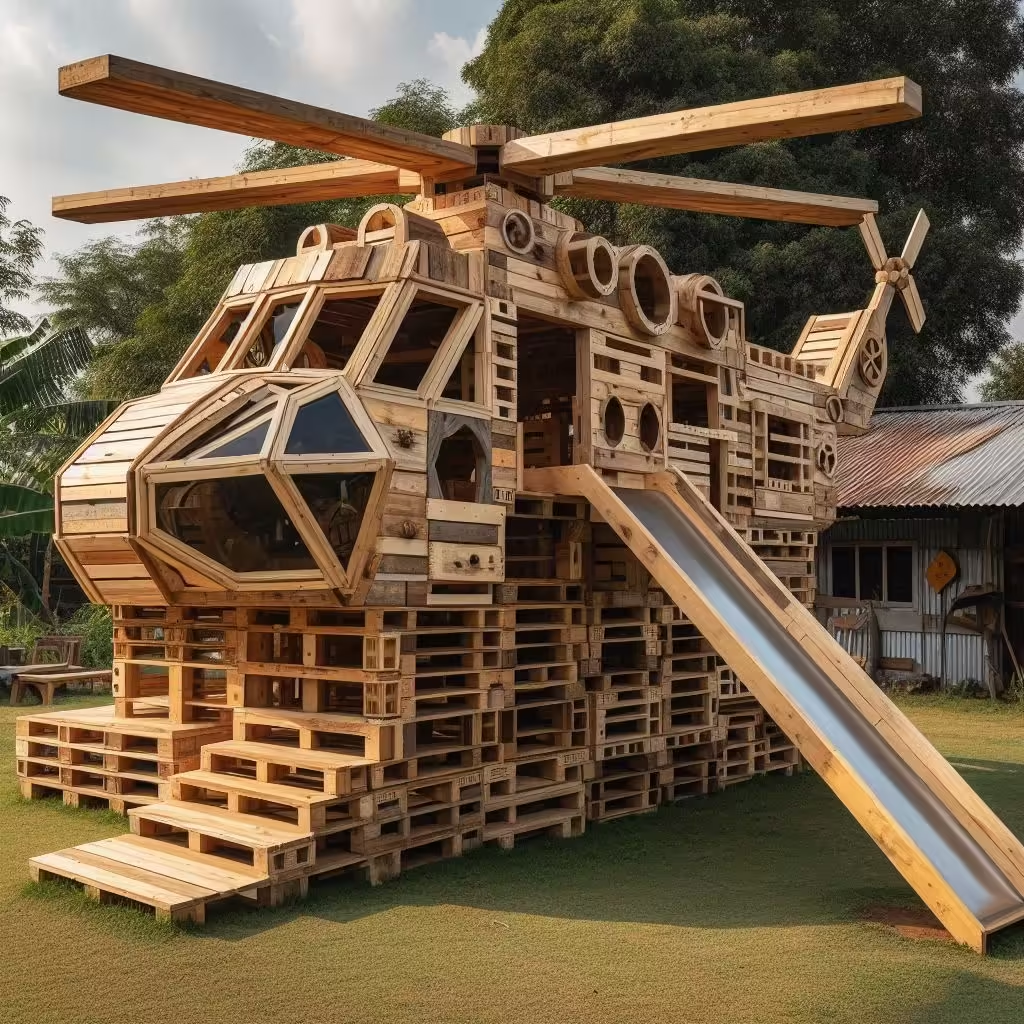
The aesthetic qualities of wood bring warmth and character to any space. A wood helicopter can serve as an impressive focal point, inviting admiration and conversation.
Natural wood textures and colors evoke a sense of craftsmanship that resonates deeply with many collectors. Each piece tells a unique story, informed by the type of wood used and the techniques employed in its creation.
Whether displayed on a shelf, as part of a collection, or gifted to an aviation enthusiast, wooden helicopters offer a timeless charm that transcends trends. Their beauty is enduring, appealing to diverse tastes and styles.
Durability and Longevity
Durability is another significant advantage of wood helicopters. Crafted from high-quality wood, these pieces can withstand wear and tear far better than many plastic alternatives.
A well-constructed wooden helicopter maintains its structural integrity over time, allowing it to be enjoyed for generations. For those who invest in collectible pieces, this longevity is a critical factor, ensuring that their investment retains value.
Moreover, wooden helicopters can often be repaired or refinished, further extending their lifespan. With proper care, they can remain in pristine condition, ready to delight new owners or audiences.
How to Choose the Right Wood Helicopter
Selecting the right wood helicopter can be a daunting task given the variety available on the market today. Factors such as purpose, aesthetics, and budget play a crucial role in the decision-making process.
Understanding what to look for can simplify the selection and ensure that the chosen piece aligns with your preferences and needs.
Considerations for Beginners
For those new to the world of wood helicopters, it’s essential to approach the selection process with clarity. Beginners should consider whether they want a functional item, a display piece, or something in between.
Functional wooden toy helicopters may suit families with young children, as they provide opportunities for play and imagination. On the other hand, those looking for a display piece might prefer a carefully crafted scale model or intricate sculpture.
Additionally, understanding your budget is important. While most wooden helicopters are reasonably priced, some unique or artistic pieces can be more costly. Setting a budget upfront helps narrow down options and avoids unwelcome surprises later.
Features to Look For
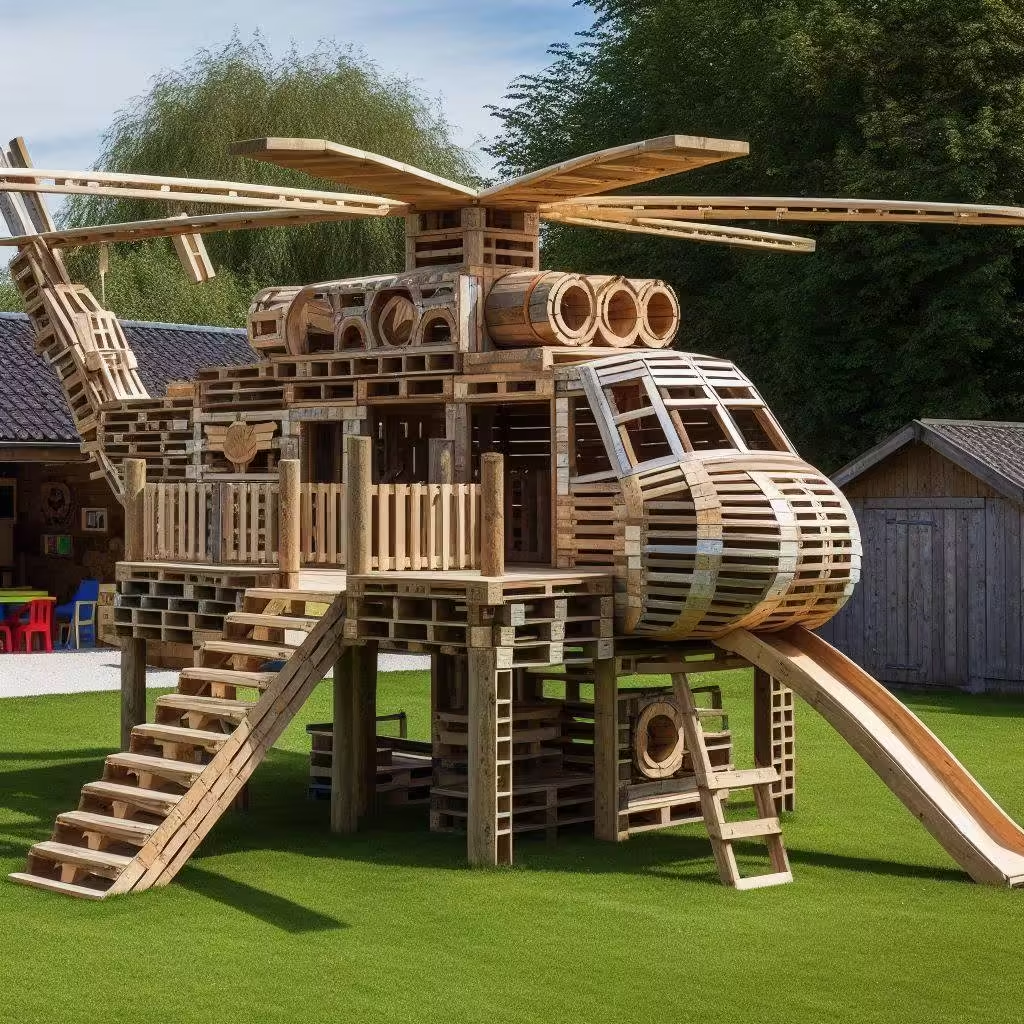
Once you’ve established your purpose and budget, it’s time to consider specific features that enhance the overall experience. Quality craftsmanship is vital—look for smooth joints, attention to detail, and a finish that showcases the wood’s grain.
If considering a toy helicopter, check for safety features. Ensure that edges are rounded and the material is non-toxic. Additionally, verify that moving parts operate smoothly and do not pose any choking hazards for children.
For decorative pieces, consider the size and style. Whether you prefer rustic charm or modern elegance, select a piece that complements your existing decor.
Price Range and Value
Understanding the price range of wooden helicopters can help make an informed purchase. Generally, simple toy helicopters are more affordable than detailed scale models or artistic sculptures.
While higher prices can indicate exceptional craftsmanship, it’s important to evaluate the value relative to your interests. Investing in a well-crafted piece can pay off in terms of enjoyment and longevity, especially if you’re passionate about aviation or craftsmanship.
Comparing different sellers and checking reviews can provide insights into quality and customer satisfaction, helping you make a choice that fits both your budget and expectations.
Building Your Own Wood Helicopter
For those seeking a more hands-on experience, building your own wood helicopter can be a rewarding project. Not only does it provide a deep connection to the craft, but it also allows individuals to customize their creations.
From designing to constructing, the process can be enriching and enjoyable, leading to a unique piece that reflects personal taste.
Essential Tools and Materials
Before embarking on the building journey, gather essential tools and materials. Basic woodworking tools such as saws, chisels, sanders, and glue will be indispensable.
Selecting the right type of wood is crucial. Balsa and basswood are excellent choices for beginners due to their lightweight and maneuverability. It’s also wise to have sandpaper on hand for smoothing edges and achieving a polished finish.
Finally, consider adding paint or varnish to enhance aesthetics and protect the wood. Choosing colors that resonate personally can add an extra layer of uniqueness to the finished piece.
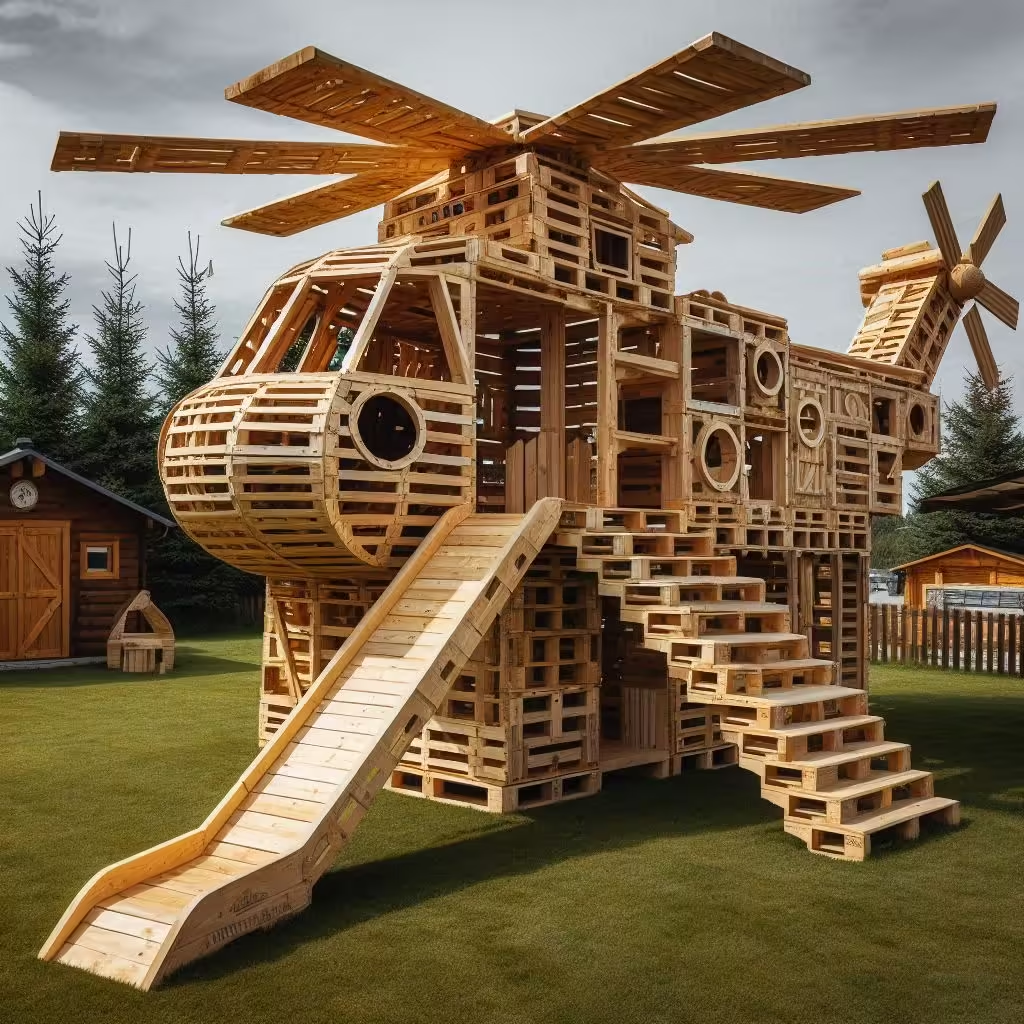
Step-by-Step Construction Process
Creating a wood helicopter can be broken down into manageable steps:
- Design: Sketch your design, noting dimensions and features.
- Cutting: Use the appropriate saw to cut out the main body, rotor blades, and landing gear according to your design.
- Shaping: Carefully shape the components using sandpaper and chisels, focusing on achieving smooth curves and edges.
- Assembly: Begin assembling the parts, securing them with wood glue. Pay attention to balance to ensure your helicopter stands properly.
- Finishing: Once assembled, apply paint or varnish, allowing ample drying time before handling.
Each step is an opportunity for creativity and experimentation, enabling builders to refine their skills while producing a unique piece.
Safety Tips for Working with Wood
Safety should always be a priority during woodworking projects. Wearing protective eyewear is essential, especially when using power tools.
Ensure that your workspace is clean and organized to reduce the risk of accidents. Familiarize yourself with the tools and follow instructions carefully, especially when using equipment that poses risks.
Lastly, don’t hesitate to seek assistance or guidance from experienced woodworkers. Engaging with a community can enhance your knowledge and skills while providing additional support during challenging aspects of the project.
Maintenance and Care for Wood Helicopters
To ensure that your wood helicopter remains in excellent condition, regular maintenance and care are necessary. Proper upkeep not only preserves the aesthetic qualities but also extends the lifespan of the piece.
Understanding how to care for wooden items is vital for both casual collectors and dedicated enthusiasts.
Cleaning Techniques
Cleaning your wooden helicopter is essential to maintain its beauty. Dust and debris can accumulate, dulling the finish over time. Using a soft, dry cloth is an effective method for routine cleaning.
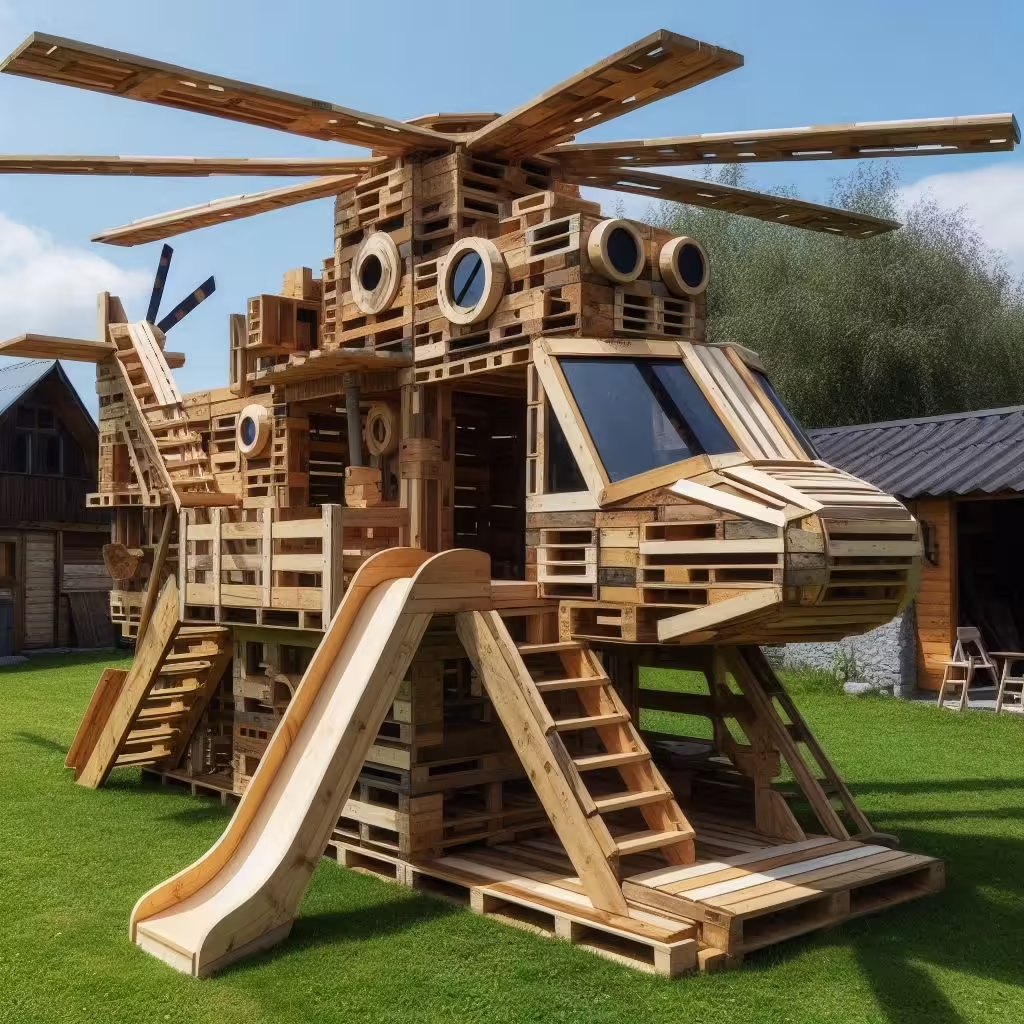
For deeper cleans, a slightly damp cloth can be employed, followed by immediate drying to prevent moisture absorption. Avoid using harsh chemicals or abrasive materials, as these can damage the finish and potentially lead to deterioration.
Regularly inspecting the piece for signs of wear or damage is also prudent. Addressing issues promptly can prevent further deterioration and maintain its value.
Repairing Common Issues
Should your wood helicopter sustain damage, knowing how to address common issues is invaluable. Minor scratches can often be repaired using touch-up paint or a clear wood finish.
For more significant damage, like cracks or breaks, carefully realigning the pieces and applying wood glue can restore integrity. Clamping the area until the glue dries is advisable to ensure a strong bond.
In cases of structural damage, consider consulting a professional or experienced hobbyist for guidance. Sometimes, expert intervention can save a piece that might otherwise be deemed irreparable.
Notes
When creating or maintaining wood helicopters, certain notes are crucial to ensure quality and longevity.
Importance of Quality Materials
Using high-quality materials is foundational when crafting or purchasing a wood helicopter. The type of wood selected can significantly influence the final product’s durability and appearance.
Opt for woods known for their strength and resistance to warping, such as birch, oak, or mahogany. Such selections not only enhance the piece’s longevity but also elevate its aesthetic appeal.
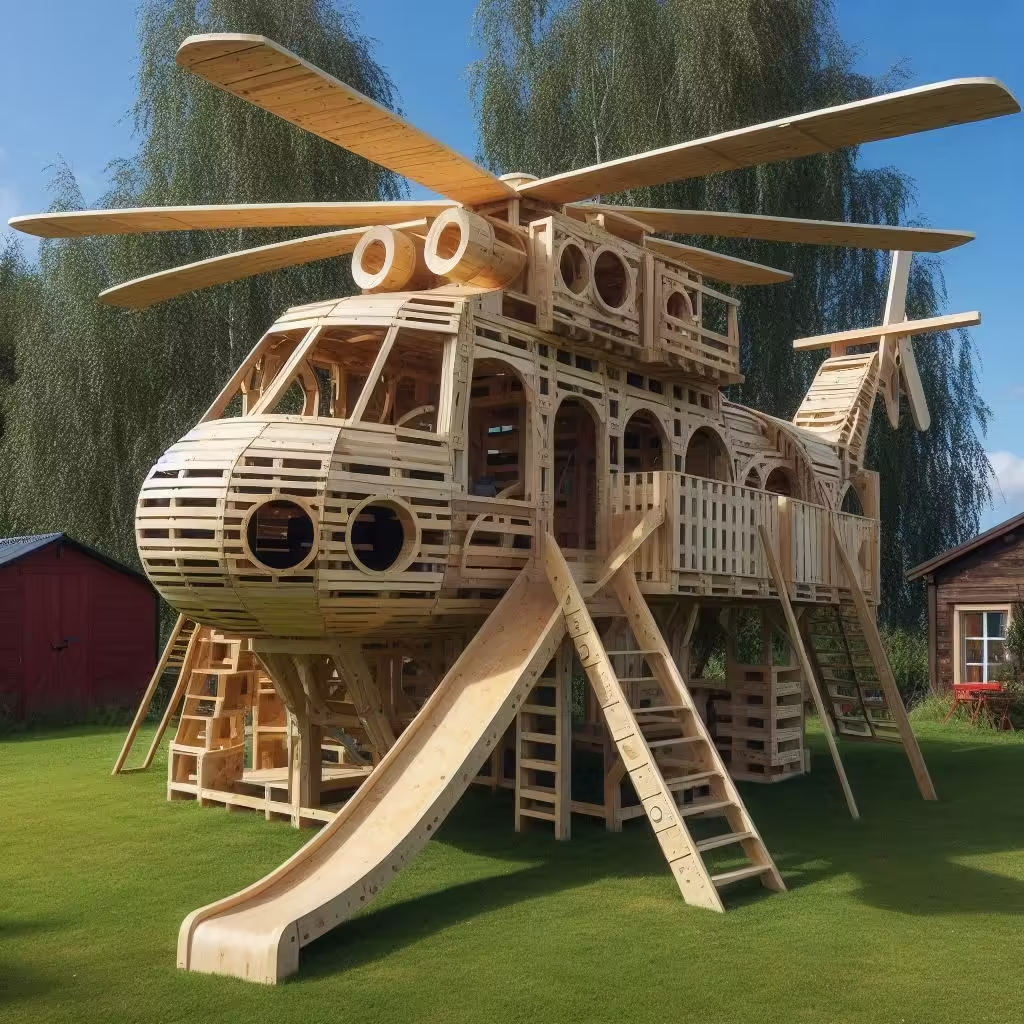
Investing in quality materials ultimately leads to greater satisfaction, whether it’s for a personal project or for collectors hoping to showcase their work.
Emphasis on Proper Techniques
Employing proper crafting techniques is equally vital to achieving a satisfactory result. Whether assembling a model or crafting a sculpture, adherence to best practices ensures structural integrity and beauty.
Taking the time to research and practice techniques can greatly improve outcomes. Engaging with online tutorials or workshops can expand knowledge and refine skills, benefiting both novice and experienced woodworkers.
Mistakes to Avoid
As with any craft, certain pitfalls can hinder progress when working with wood helicopters. Being aware of common mistakes can lead to smoother experiences and superior results.
Ignoring Safety Precautions
Neglecting safety precautions can have dire consequences when working with tools and materials. Always prioritize safety gear, such as goggles and gloves, and familiarize yourself with tool operation before beginning.
Creating a safe workspace and remaining cautious is essential for an enjoyable and productive experience.
Overlooking Weight Distribution
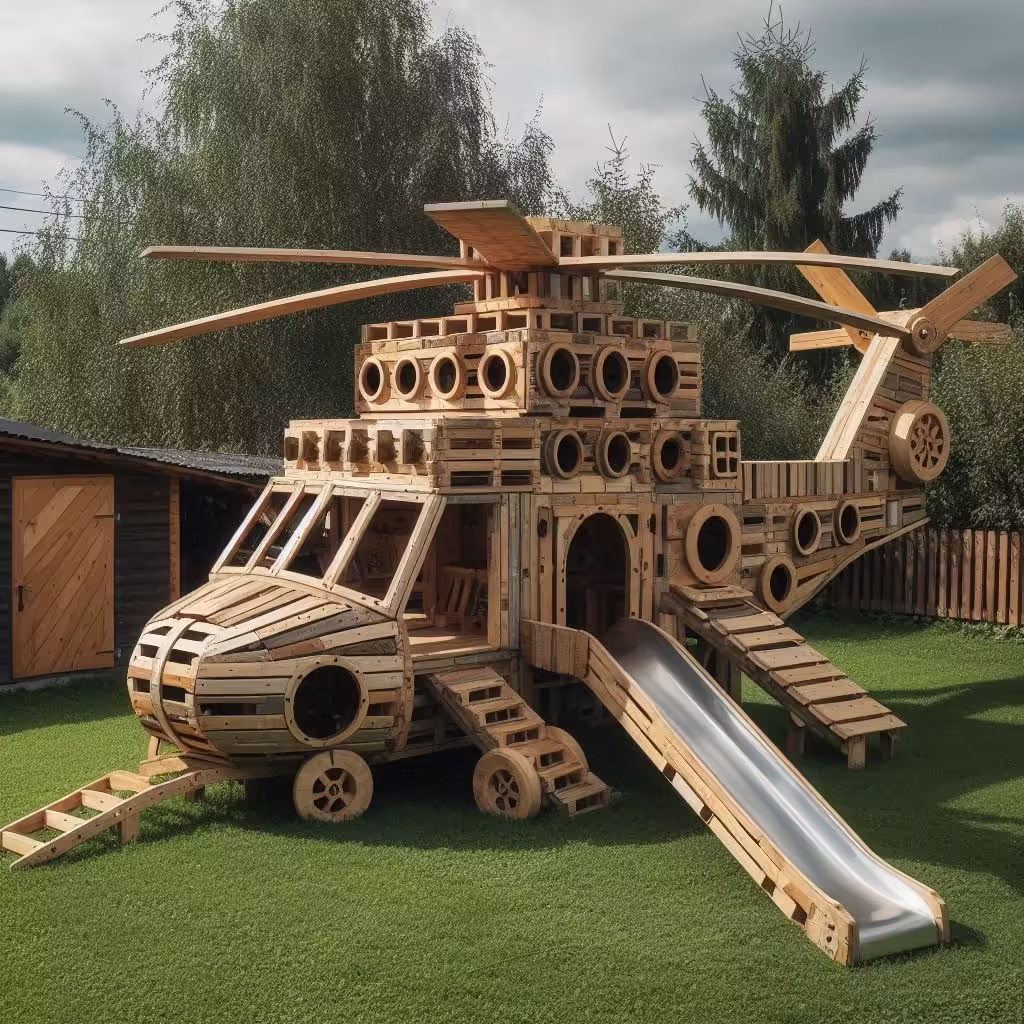
A common mistake when building wood helicopters is overlooking weight distribution. Imbalanced pieces can lead to instability, affecting performance or causing them to topple over.
Focusing on symmetrical designs and understanding the physics of balance will yield better results. Testing weight distribution during the assembly phase can save time and frustration later.
Neglecting Finishing Touches
The finishing touches can make all the difference in the final appearance of your wood helicopter. Failing to adequately sand surfaces or apply finish can leave a rough and unappealing texture.
Take the time to polish and refine your piece thoroughly. An impeccable finish enhances both visual appeal and protection, ensuring your creation stands the test of time.
Frequently Asked Questions
Curiosity around wooden helicopters often prompts questions about their capabilities and maintenance. Answering some common inquiries can provide clarity for enthusiasts and potential buyers alike.
Can wood helicopters fly?
Traditional wooden helicopters crafted as toys generally do not possess the capability to fly. However, certain designs may feature rotational blades that simulate flight mechanics.
Scale models can be designed to fly but require careful engineering and balance to achieve aerial capabilities. Enthusiasts interested in functional flying models often experiment with lightweight materials and precise construction techniques.
What types of wood are best for making helicopters?
Various woods can be utilized for making wood helicopters, each offering unique characteristics. Balsa wood is a popular choice for its lightweight and easy-to-manipulate qualities, making it ideal for model making.
Basswood is another recommended option due to its fine grain and versatility. More robust materials like maple or oak are suitable for decorative sculptures, offering enhanced durability and beauty.
How do I maintain my wooden helicopter?
Maintaining a wooden helicopter involves regular cleaning and inspections for wear. Gently dusting with a soft cloth can keep surfaces clean, while occasional deep cleans using a damp cloth can refresh the finish.
Checking for damages, such as scratches or cracks, allows for timely repairs. Utilizing touch-up paints and wood glue can restore minor imperfections and prolong the piece’s life.
Conclusion
The allure of a wood helicopter lies not only in its elegant design but also in the rich history and craftsmanship that accompanies it. Whether as a functional toy, a stunning display piece, or an artistic creation, wooden helicopters hold a unique place in both aviation and art.
Through understanding their significance, types, benefits, and maintenance, enthusiasts can fully appreciate the depth of this captivating craft. The journey of exploring, creating, or collecting wooden helicopters invites endless possibilities and connections to the world of flight, ensuring that these remarkable pieces continue to enchant for generations to come.


